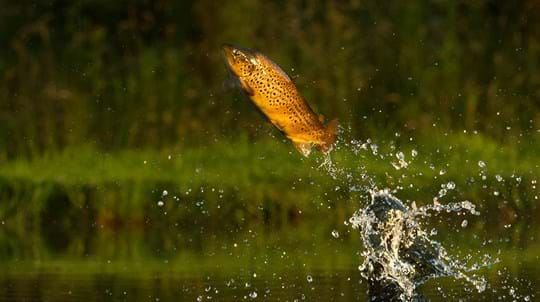
Credit: Linda Pitkin / naturepl.com
How do Atlantic salmon breed?
Atlantic salmon hatch in freshwater breeding grounds, developing for several years before migrating out to sea where they will spend most of their lives. When the time comes to breed, salmon return to the breeding grounds they were born in, travelling upstream. When they reach their destination, females lay eggs in grooves in the waterbed and males deposit sperm to fertilise them. The fish die soon after breeding.





